Whether it was their daily stew, their seasonal vegetables, their wild fruits, the fresh milk products, or oats and cereal, the Viking diet certainly made them into the legendary warriors everybody knows. Viking food was diverse and nutritious for all layers of society, which is also something highly unusual in medieval times.
How come they were able to provide food for everyone? And what was their favorite meal?
Table of Contents
What Was Viking Food?
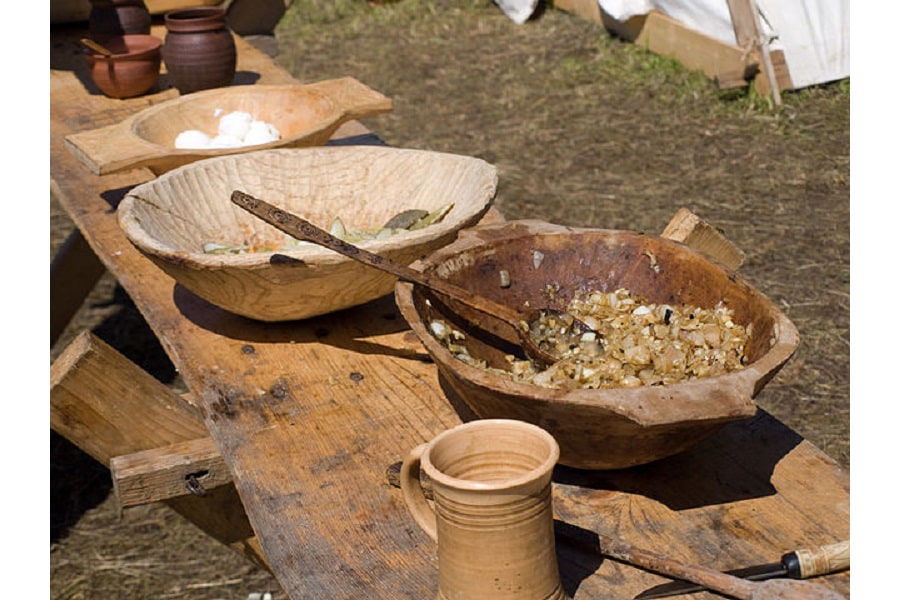
The Viking diet was quite diverse and contained different marine foods and meat from domesticated animals. Because of this, the Vikings normally didn’t go out to hunt. Still, a wide range of fruits, grains, and dairy products like milk and fresh cheese from cattle and sheep were at least equally prevalent in the Viking meals.
The Vikings were farmers, which is often forgotten when the legends surrounding the Nordic people are told. In fact, they were very knowledgeable farmers and were able to grow a wide range of crops and fruits whilst caring for their cattle. They were self-sufficient and their diet was much better and much more varied than that of other countries in continental Europe.
Unfortunately for the Vikings, that doesn’t mean that they were exempt from food-related illnesses. Actually, the contents of ancient drains and cesspools showed that Vikings often suffered from parasites and other intestinal worms. This most probably had to do with a combination of factors, including hygiene and living life close to their animals.
What Was the Staple Viking Meal?
For adults, the Viking diet changed with the seasons. Overall, adults ate skause: hearty meals with meat, fish, dairy, grains, fruit, and vegetables, often in the form of a stew. The staple Viking foods were plant foods like wheat and barley. Especially among children, these grains would make up the largest part of their diet as they would eat little to no seafood.
One poem about Hárbard and Thor also describes a typical Viking meal. Thor tries to persuade Hárbard with the following phrases: ‘Ferry me over the sound, then I will feed you tomorrow! I have a basket on my back, never was the food better. I ate in peace before I left home, herrings and oatmeal, so I am still full.’
Overall, the Viking food wasn’t necessarily low in fats. Often populations that were located more to the North – especially in the middle ages – had a higher amount of fat intake.
One gram of fat provides more energy than one gram of carbohydrates or protein, and the cold weather didn’t always allow for the continuous production of crops and meat. For this reason, the Vikings preferred fatty foods, something which was especially important in the cold months.
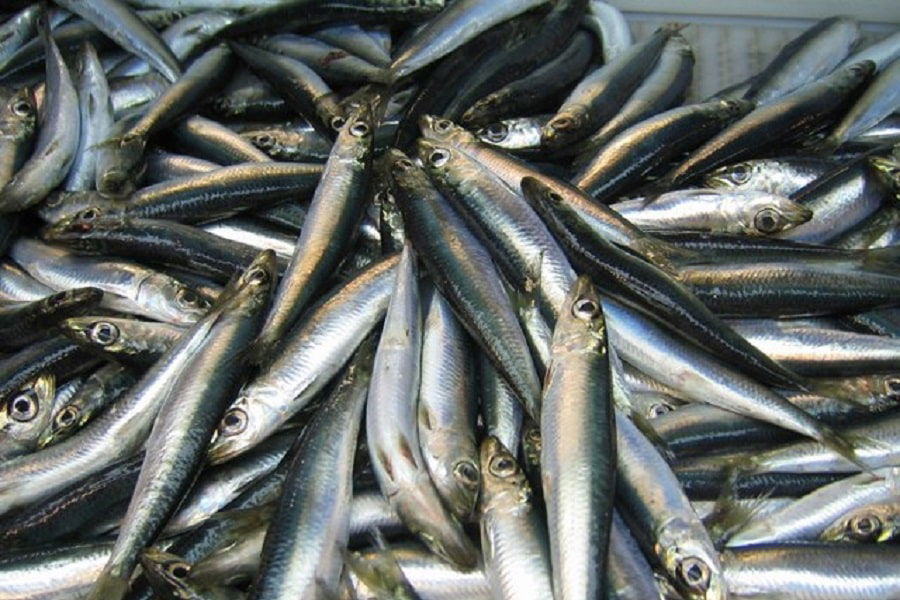
English Disgrace
At times, and when other fruits and other grains were scarce, Viking meals also included horse meat. This is one of the reasons that the English later described the Vikings and their food as improper and gluttonous. For the English Christians, the Vikings ate too much and drank too exorbitantly, and their consumption of horse meat was considered unfaithful.
The consumption of horse meat was, however, very faithful for the Vikings. They only ate it after it was sacrificed to the Norse gods. Since the horse was one of the most useful animals, sacrificing it showed greater respect for the gods compared to sacrificing a chicken or goat.
What Kind of Food Did Vikings Eat?
Wild and dried fruits were in abundance during large parts of the year for the Vikings. Other than that, traditional Norse food included different kinds of meats. The bread was another important part of the diet, as well as other grain-based meals: porridge made of oats, millet, and wheat. Since the water could be dangerous to drink, the Vikings would also consume large amounts of (low-alcoholic) beer.
READ MORE: The Birth of Booze: Who Invented Alcohol and How It Shaped History?
Fruits and Vegetables

The fruits that were prevalent in the Northern climate include raspberries, bilberries, hawthorn berries, plums, wild apples, walnuts, and hazelnuts. Apples in particular were regarded to be healthy in the Viking age. According to Norse mythology, the goddess Idunn’s apples kept her eternally young.
The vegetables that the Vikings grew themselves included carrots, beans, cabbage, and peas. It really depended on the season in which vegetables were available. Sometimes root vegetables were abundant, at other times leaf vegetables.
The winter months probably saw more crops like cauliflower and potatoes, while in the summer more beans and carrots could be harvested and consumed.
Cereal and Bread
Still, the staple of Viking food came in the form of cereals and bread. The cereals that were most important include rye and barley. Other than that, oats, millet, and wheat were cultivated and used for porridge and baking bread, amongst others.
Rye was probably one of the most important cereals, mainly used for making sour-dough bread. Although the Vikings did grow wheat, the bread made from grain was normally a luxury product that was used to feed the rich.
Some other smaller breads were also baked, which just consisted of flour, eggs, and water as ingredients. Normally the different types of bread were used during the evening meal, but occasionally also in the morning to supply their meals.
Porridge was especially an important component of the breakfast of the children. The poorer part of the population ate it in abundance. The porridge was either made from buckwheat, oats, barley, or millet. Berries, apples, and honey were added to increase the sweetness.
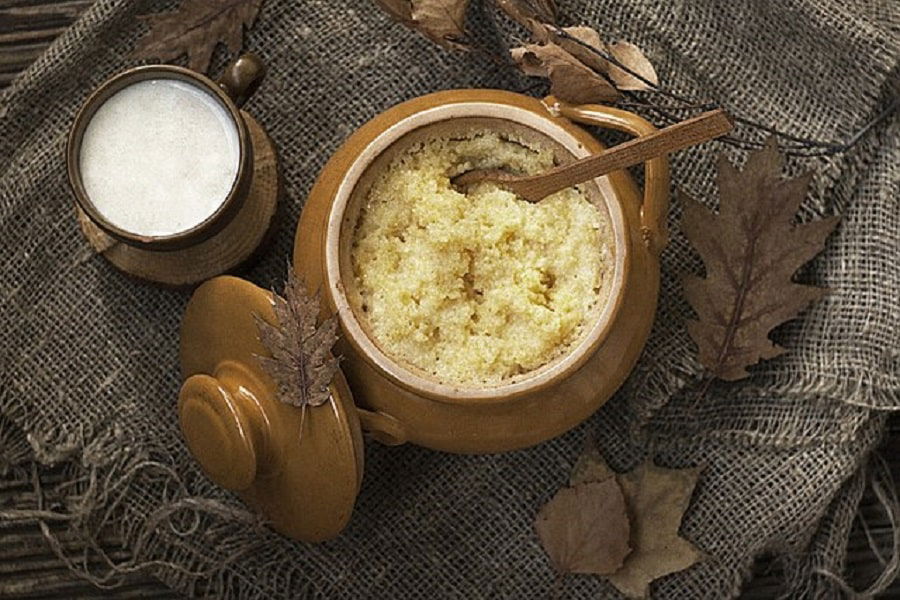
Beer, Mead, and Wine
Beer and mead are also associated with the Viking period. The beer was made by fermenting barley and was consumed in large quantities. Both strong and weak beer was produced. Since the water treatment wasn’t very developed in the age of the Vikings, the production of (weak) beer was considered highly important.
On festive occasions, mead and wine were also consumed. Mead was a fermented drink made from honey, water, and different exotic spices. Wine, on the other hand, was imported from other countries in Europe. It was a luxury product, and only a few wealthy individuals could afford it.
READ MORE: Who Invented Water? History of the Water Molecule
Meats, Fish, and Animal Products
Many Viking age people had their own land. Here, they would hold horses, pigs, sheep, and goats. The animals probably lived freely in the Viking settlements.
The animals weren’t just brought up for their meat. First, they were used as working animals. If they couldn’t fulfill that duty anymore, they’d be slaughtered and eaten. Every single part of the animal was used. For example, bones, horns, and skins were great raw materials to make clothes and things like needles, spoons, or artwork.
An important feat of Viking food and the overall Viking diet is that everybody had access to meat – every day. This wasn’t very common in the middle ages when many poor people often had to rely on vegetables.
The most commonly eaten meat was pork, and the pig was the only animal that was kept exclusively for its meat; not for working. We shouldn’t forget, however, that the Vikings would spend quite some time at sea. Therefore, fish also was a major part of their diet. Herrings, for example, were abundant and prepared in a myriad of ways.
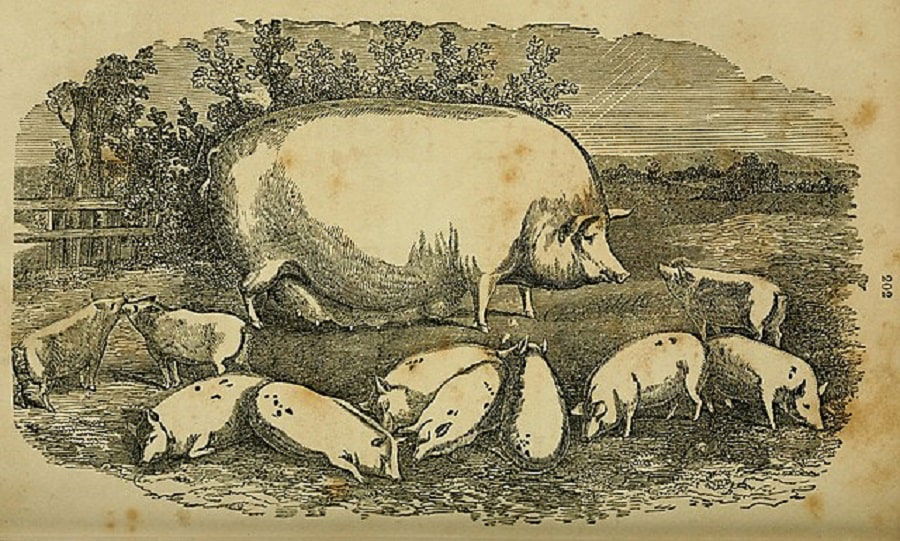
Milk, Butter, Eggs, and Cheese
Of course, Norse food also included products made from what their domestic animals produced, like raw milk, cheese, and eggs. Especially cheese and butter could be preserved for longer times if heavily salted.
Two Daily Meals: Dagmall and Natmall
A typical day in the Viking age included only two meals. During the day, the dagmall (day meal) was the main source of nutrition. In the evening, the nattmall (night meal) was eaten. Normally, the dagmal consisted of the leftover stew from the day before.
The leftover stew was kept in the pot overnight so that by the morning it would’ve risen to the top. This process changed the consistency of the stew and with that, the energy release of the nutritious content. Because of the rising, the energy would be released slowly over the span of the day.
As indicated earlier, children didn’t eat as much meat or animal products as their parents. They usually ate porridge with some sort of bread, fruit, and honey for their dagmall. Besides the stew, some adults also ate fruit and bread alongside their morning meal.
Preparing the night meal was one of the most important tasks for the women of the household. Meat and fish were often the main ingredients, with additional vegetables added over the span of several days. That’s right, a pot of stew normally lasted more than one day, especially because new ingredients were added every day to make it more diverse and nutritious.
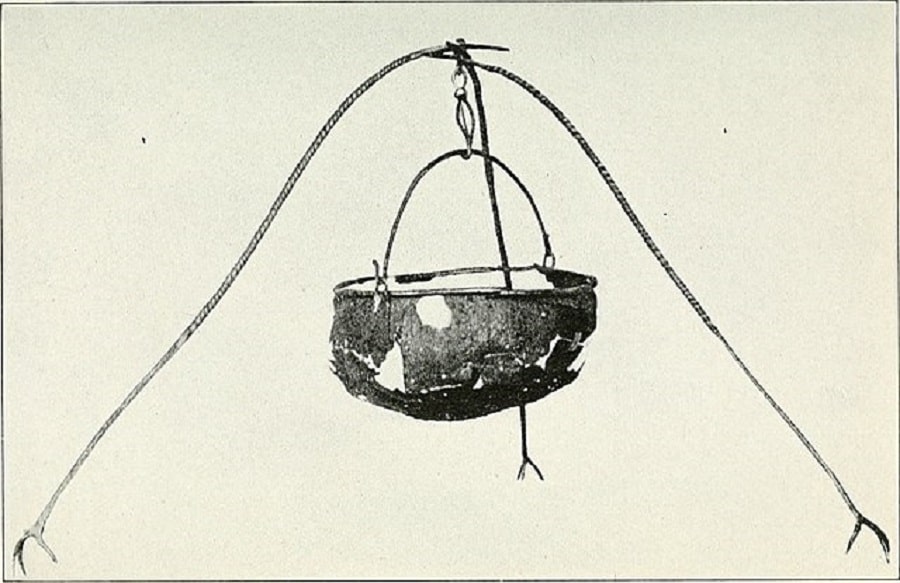
Preparation and Preservation of Viking Food
Viking food was prepared in many different ways. However, it should be clear that there was no fridge or freezer back in the 8th century. While some foods would freeze in the winter, other methods were needed to preserve the summer foods for the winter.
Preserving Milk
One of the methods of preserving was simply by processing it; as was the case with milk. In order to preserve the milk, the Vikings would turn the milk and milk solids into other dairy products like cheese, butter, and skyr (which resembles Greek yogurt).
Cooking and Fermenting Meat
While you would think that Vikings used huge roasting pits over a large bonfire to prepare their meat, the evidence suggests that Vikings mainly cooked their meat in stews. An occasional spit would make an appearance, but normally the meat was boiled in clay or soapstone pots together with other ingredients.
Fermenting was also a big part of the food preparation of the Vikings. They usually fermented different types of meat and fish. Hakari (fermented shark) and surströmming (fermented herring) were their delicacies.
For the average non-Viking fermented shark sounds terrible. For the Vikings, this food meant pleasure. The shark itself was often venomous and could only be eaten after an elaborate process.
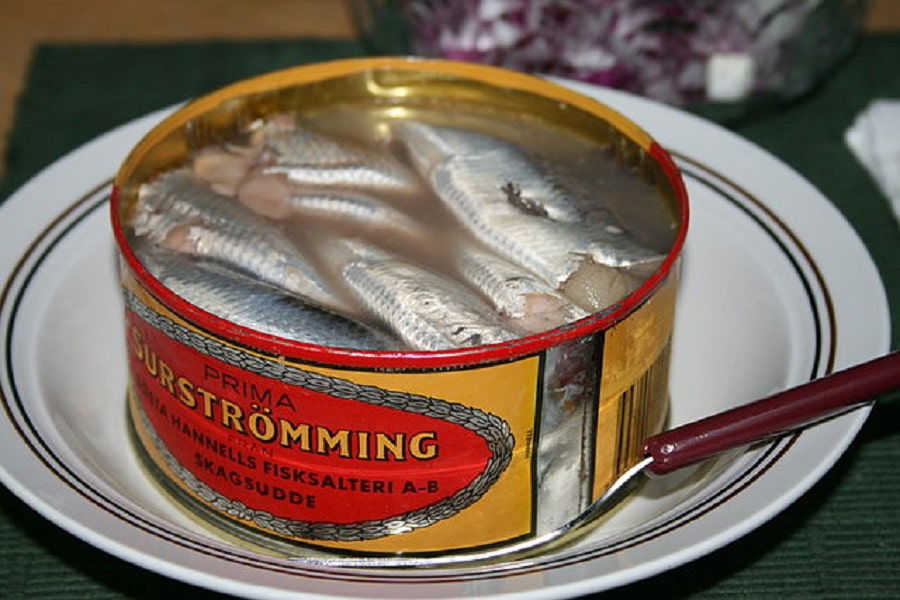
General Preparation
The skause was really the main meal of the Vikings. The hearty stew was normally prepared in a soapstone pot or a metal cauldron. The content would slowly simmer over one of the central hearths of the longhouse. While the stew was simmering, women baked the bread and oftentimes added soured milk or buttermilk to give it a richer taste.
Besides the skause, they sometimes made sausages from the organ meat and blood of their animals; keeping true to their habit of eating every part of the animal. The occasional horse meat was often eaten in a soup instead of a stew.
What Did Vikings Season Their Food With?
While salt was the main seasoning, the Vikings had access to a wide range of herbs and spices. Amongst others, they used coriander, cumin, mustard, and wild horseradish. For their sweet tooth, they normally used honey or some of the many different fruits available.
What Did Vikings Cook Their Food In?
The pot that the Vikings used for cooking meat and other stew was called a soðketill. The meat stew would start out with some cold water, which was added to the pot. Any Viking household had an open fire in the house called máledr. If they wanted to heat up liquids like milk, they would put them in an animal hide and drop heated stones into the liquid.
The stones are prevalent in archeological excavations, mainly because they could only be used a couple of times. The hot water would affect the stone to a point that they became brittle and had to be thrown away rather quickly. Therefore, they are found in large numbers.
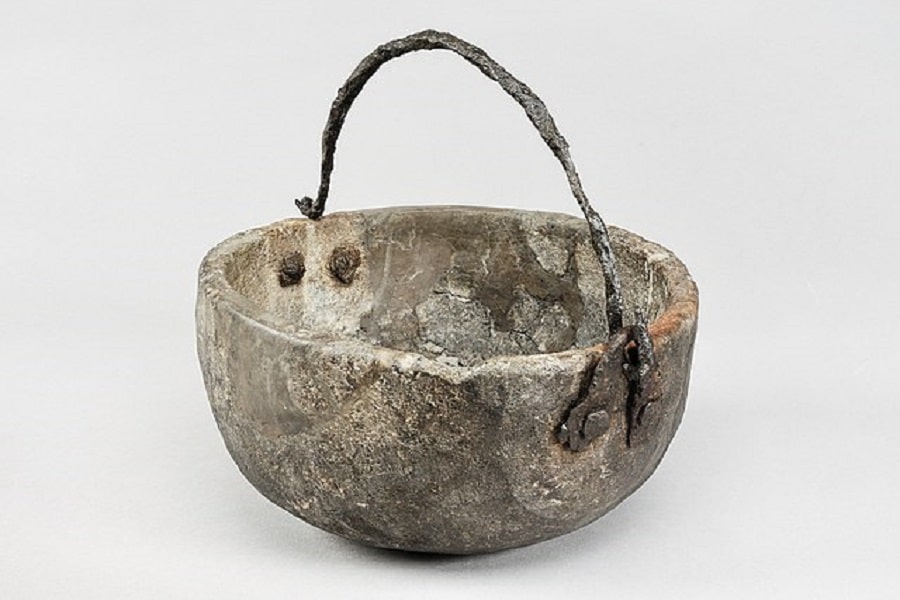
What Food Was Served at Viking Celebrations?
The food eaten during celebrations depended on the wealth of the host, but it is certain that Vikings ate well at feasts. For religious celebrations, animals were sacrificed and later eaten in a social setting. Other than that, the feasts consisted of fresh food platters, buttered vegetables, rare greens, fruits, sweet desserts as well as large amounts of beer and mead for all. The richest Vikings also provided imported wine to their guests.
Seasonal festivals such as Winter Nights and Jul were a reason for Viking Feasts. Other occasions were during harvest festivals like Mabon, other religious rituals, or as a personal celebration like a wedding or a successful voyage. Major festivals with a Viking feast could last up to 12 days, while minor celebrations normally only lasted one or two.
What Did Vikings Eat Before the War?
Many legends say that Vikings ate magic mushrooms before going to war. However, recent research indicates that the ‘Berserkers’ would get high on henbane or alcohol rather than mushrooms. Henbane is a group of plants that has connected to witchcraft. These plants are known for their psychoactive effects and for causing delirious states in which the user is dissociated from reality.
Some evidence of cannabis use is also present in their remains. However, just like magic mushrooms, this would rather install a lay back and peaceful state as opposed to an angry rage.
Since the henbane could be found anywhere at the time, the use of henbane was the most likely option when it comes to reaching the Berserker state. Some accounts of people who recently took henbane don’t report anything significant, although it is known that people tend to behave in strange ways and imitate aggressive animals when consuming this plant.
Other effects of henbane include swelling and reddening of the skin, widening of the pupils, teeth chattering, body chills or fever, lowered blood pressure, and pain relief, which could have been what enabled the Berserkers to continue brutally battling in the face of injury.
While nowadays anyone would end up in the emergency department, the Vikings actually used it to their advantage and were – one way or another – able to end up victorious in most of their battles.